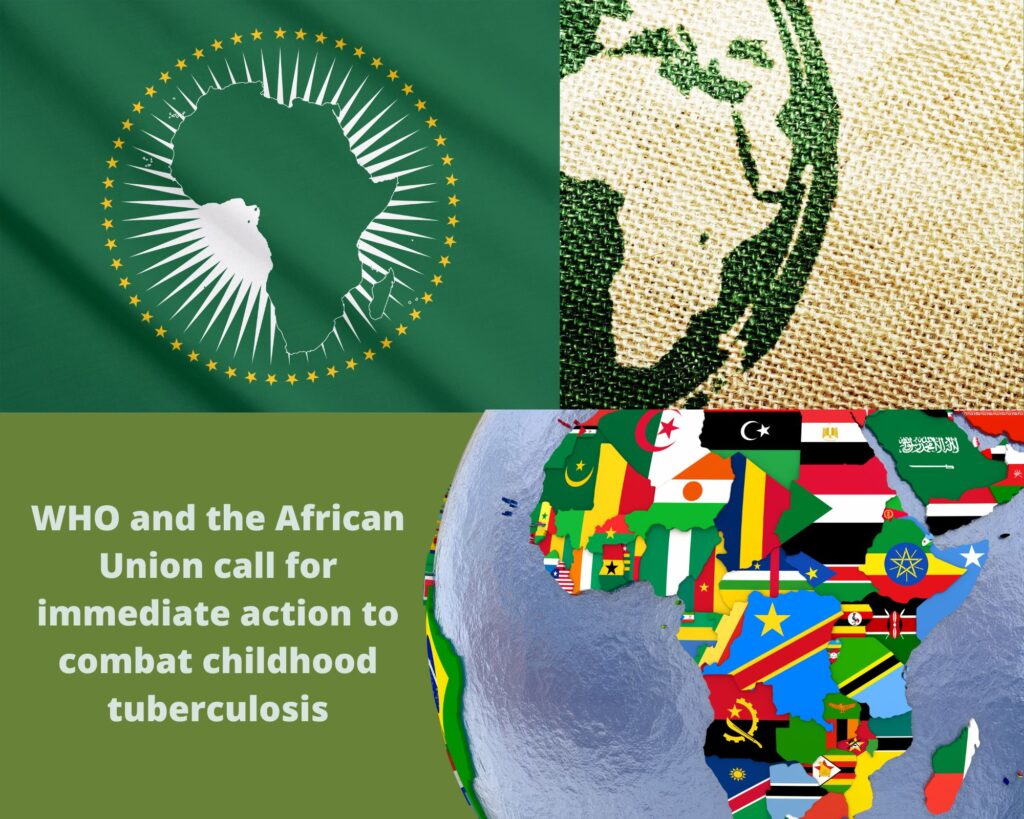Today, the African Union and the World Health Organization (WHO) urged swift action and all-encompassing action to reduce tuberculosis’s substantial toll on African children. On the eve of the 72nd meeting of the WHO Regional Committee for Africa in Lomé, Togo, the Stop TB Partnership and the Elizabeth Glaser Pediatric AIDS Foundation (EGPAF) launched a combined plea.
Around 322 000 children and young adolescents (aged 0–15 years) or a third of tuberculosis cases among those under 15 worldwide are found in the African continent, which is home to 17 of the 30 nations with the most significant tuberculosis burden worldwide. The fact that two-thirds of children in the area go unreported or untreated for the illness is particularly concerning because it increases the likelihood of rapid disease progression and fatality, particularly in younger children. Only around a third (32%) of children under five have been diagnosed, the lowest percentage worldwide.
Due to difficulties in specimen collection and bacteriological confirmation of the disease in children who exhibit non-specific clinical symptoms similar to those of other prevalent pediatric illnesses, tuberculosis diagnosis rates are low. Additionally, primary healthcare or child health services are frequently provided in settings where the ability to diagnose tuberculosis is commonly limited to children and young adolescents.
Malnutrition worsens the effects of TB. Malnutrition is linked to 19% of all tuberculosis cases worldwide
According to H.E. Minata Samate Cessouma, Commissioner for Health, Humanitarian Affairs, and Social Development, African Union Commission, “Childhood tuberculosis doubled with malnutrition poses serious health issues in the African Union Member States.” “Malnourished children with tuberculosis are more likely to experience extensive and severe consequences. To quickly diagnose the condition in children, there is an urgent need for creative initiatives that integrate tuberculosis detection into nutrition programmers.
“Until recently, the pandemic of pediatric tuberculosis in Africa has largely gone unnoticed since it has been happening in secret. According to Dr. Matshidiso Moeti, WHO Regional Director for Africa, “We hope that our call will spur action and ensure that no child in Africa is lost to a disease that in many parts of the world is now history. “Strong political leadership, accountability, financial assistance, and global solidarity are crucially needed to enhance access to efficient diagnostics, treatments, vaccinations, and other instruments for tuberculosis management.”
The African Union, WHO, EGPAF, and Stop TB Partnership called for immediate action to hasten recovery from the effects of COVID-19 and urged nations to support the expansion of child-friendly tuberculosis diagnosis, treatment, and care at the side event, Towards political leadership to end childhood tuberculosis by 2030.
The plight of children
“Even though tuberculosis is treatable and preventive, one child worldwide passes away from it every two minutes. The suffering of children with tuberculosis is a measure of our failure to recognize and treat pediatric tuberculosis, according to Dr. Lucica Ditiu, executive director of Stop TB Partnership. Children with tuberculosis never spread the disease and are almost always infected by an adult. To ensure that an airborne illness like TB, which has been around for hundreds of years, does not threaten future generations, we call on all our partners to be dedicated, united, and learn from our successes and mistakes.
According to the WHO End TB Strategy, nations should strive to lower deaths from TB by 90% and cases by 80% by 2030 compared to 2015. The approach also identifies crucial thresholds countries must pass to end the disease by 2020 and 2025.
The 2020 target aimed for a 35% drop in tuberculosis fatalities and a 20% drop in cases. Only six of the high-burden nations for tuberculosis attained the 2020 case reduction milestone, and only six did so to reduce fatalities by 35%.
Pandemic of tuberculosis
The global health community can save the lives of thousands of people living with or at risk for tuberculosis infection if we make sure to invest meaningfully in the tools and technology required to respond to the tuberculosis pandemic. However, suppose children and adolescents are not given priority in these initiatives. In that case, we will eventually fall short of attaining a future free from tuberculosis, according to Chip Lyons, president and chief executive officer of EGPAF.
The partners urged African nations to provide more financial, technical, and human resources for tuberculosis prevention and control to hasten the disease’s eradication in children and adolescents. The current level of funding and commitment in Africa’s fight against tuberculosis puts the world’s goal of eradicating the disease by 2030 in jeopardy. Africa needs at least US$ 1.3 billion annually for TB prevention and treatment, but only governments contribute 22% of that amount, with 34% coming from outside sources. The remaining portion of the budget is underfunded.
Analysis by: Advocacy Unified Network

